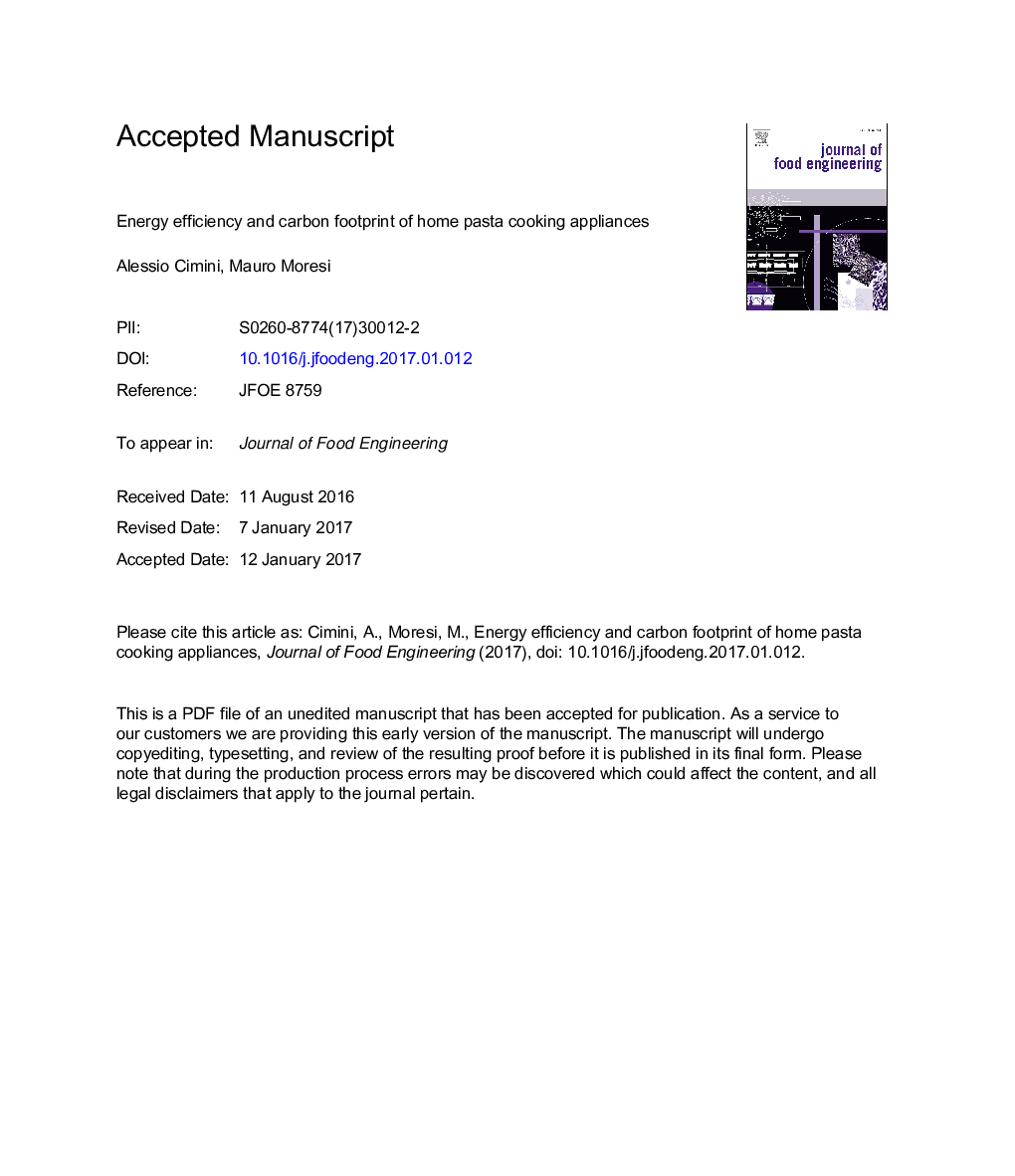| کد مقاله | کد نشریه | سال انتشار | مقاله انگلیسی | نسخه تمام متن |
|---|---|---|---|---|
| 4908997 | 1427097 | 2017 | 58 صفحه PDF | دانلود رایگان |
عنوان انگلیسی مقاله ISI
Energy efficiency and carbon footprint of home pasta cooking appliances
ترجمه فارسی عنوان
بهره وری انرژی و رد پای کربن لوازم خانگی پاستای خانگی
دانلود مقاله + سفارش ترجمه
دانلود مقاله ISI انگلیسی
رایگان برای ایرانیان
کلمات کلیدی
رد پای کربن، آشپزخانه خانگی و آشپزخانه، بهره وری انرژی آشپزی پاستا، مصرف انرژی، پخت و پز هزینه های عملیات پخت و پز،
موضوعات مرتبط
مهندسی و علوم پایه
مهندسی شیمی
مهندسی شیمی (عمومی)
چکیده انگلیسی
The energy efficiency (ηC), carbon footprint (CF) and operating costs (CC) of home dried pasta cooking were assessed. In particular, ηC for the electric hot-plate (46 ± 3%), induction (33 ± 5%), or LPG (30 ± 4%) hob was found to be definitively smaller than the minimum energy efficiency performance requirements for EU domestic hobs. Pans of different size, but with the same high thermal diffusivity, had a negligible effect on ηC at the probability level of 0.05. By covering the pan with its lid and setting the power rate of each cooking appliance initially to the maximum level to make the cooking water boil faster, and then to the minimum one to keep almost constant the cooking water temperature and allow starch granule gelatinization, GHG emissions reduced by 81, 73, or 86% with respect to those released with the LPG, electric, or induction hob adjusted at the maximum power setting, respectively. Such a cooking practice applied to the induction hob allowed CF and CC to be minimized to 0.67 kg CO2e and â¬0.47 per kg of pasta cooked. The resulting energy saving amounted to 31 or 18% of the energy consumed under the same procedure by the LPG or electric cooker, respectively. Such a cooking system in conjunction with the aforementioned practice might represent an eco-friendly solution to limit the environmental impact of dried pasta consumption.
ناشر
Database: Elsevier - ScienceDirect (ساینس دایرکت)
Journal: Journal of Food Engineering - Volume 204, July 2017, Pages 8-17
Journal: Journal of Food Engineering - Volume 204, July 2017, Pages 8-17
نویسندگان
Alessio Cimini, Mauro Moresi,
